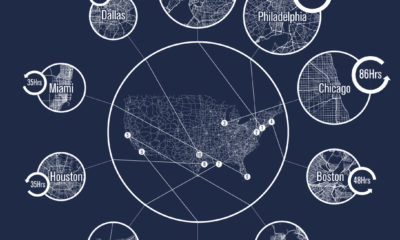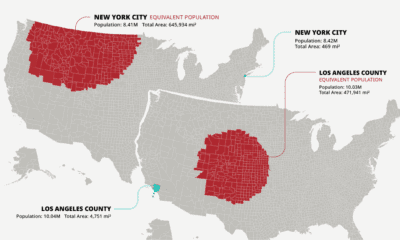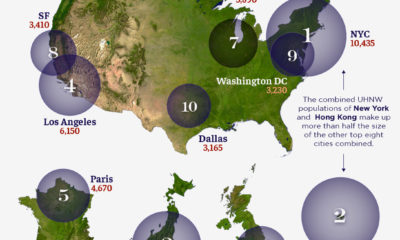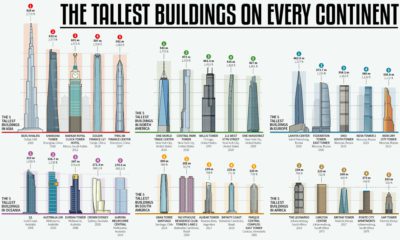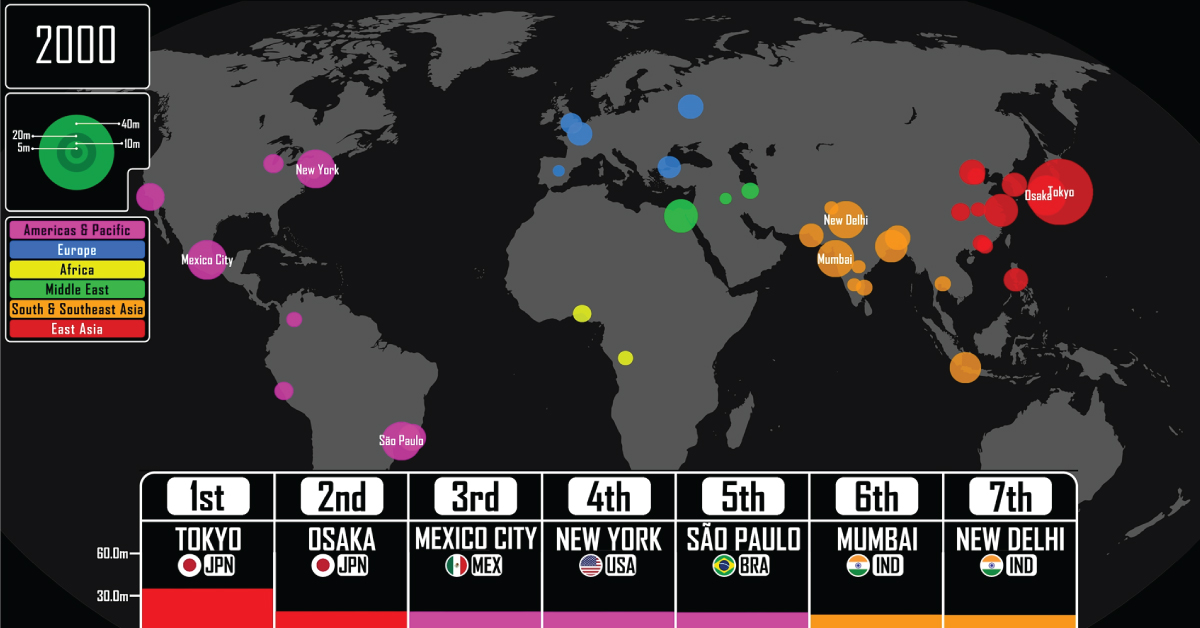Within three hours, New York’s tallest buildings were reduced to rubble, and the Pentagon—the nerve center of the American armed forces—was burning and partially collapsed. Thousands of civilians had lost their lives and were seriously injured, and the entire country was in collective shock, still trying to make sense of how a coordinated act of terrorism of that magnitude was allowed to take place on American soil. In the 20 years since 9/11, the events that occurred that morning have been analyzed in-depth from a thousand different angles. Even though the attacks took place in the era just before mobile phones had viable cameras, there are countless images and videos of the event. As well, we now have the 9/11 Commission Report, which compiles interviews from over 1,200 people in 10 countries, and draws upon two and a half million pages of documents to present its findings. For many people younger than Generation X, 9/11 is a feeling—a grim milestone from their youth—but the details are likely more fuzzy. The timeline visualization above is a high-level record of what happened that morning during the three hours when everything changed.
A Chronology of Terror
In its most simple form, the 9/11 attacks can be described as a coordinated hijacking of four commercial airplanes, which were then used to fly into high profile targets in New York City and Washington, DC. Here is a summary of the planes involved in the incident:
These four flights play a central role in what unfolded that morning. In the early hours of September 11, 2001, a collection of 19 would-be hijackers made their way through security at airports in Boston, Newark, and Washington, DC. Our three-hour timeline begins just before 8am, as the first plane involved in the attack leaves the tarmac just outside of Boston. (In situations where the exact time isn’t known, a range is given.) Sept 11, 2001, 7:59am – American Airlines Flight 11, a Boeing 767 carrying 81 passengers and 11 crew members, departs from Logan International Airport in Boston, bound for Los Angeles International Airport. 8:14 – United Airlines Flight 175, a Boeing 767, carrying 56 passengers and 9 crew members, departs from Logan International Airport in Boston, bound for Los Angeles International Airport. 8:14 – Flight 11 is hijacked over central Massachusetts. There are five hijackers on board. 8:20 – American Airlines Flight 77, a Boeing 757 with 58 passengers and 6 crew members, departs from Washington Dulles International Airport, for Los Angeles International Airport. 8:42 – United Airlines Flight 93, a Boeing 757 with 37 passengers and 7 crew members, departs from Newark International Airport, bound for San Francisco International Airport. 8:42–8:46 – Flight 175 is hijacked above northwest New Jersey. There are five hijackers on board. 8:46 – Flight 11 crashes into the north face of the North Tower (1 WTC) of the World Trade Center, between floors 93 and 99. All 92 people on board are killed. 8:50–8:54 – Flight 77 is hijacked above southern Ohio. There are five hijackers on board. 9:03 – Flight 175 crashes into the south face of the South Tower (2 WTC) of the World Trade Center, between floors 77 and 85. All 65 people on board are killed. 9:28 – Flight 93 is hijacked above northern Ohio. There are four hijackers on board. 9:37 – Flight 77 crashes into the western side of The Pentagon. All 64 people on board are killed. 9:45 – United States airspace is shut down; all operating aircraft are ordered to land at the nearest airport. 9:59 – The South Tower of the World Trade Center collapses, 56 minutes after the impact of Flight 175. 10:03 – Flight 93 is crashed by its hijackers in a field in Somerset County, Pennsylvania. Later reports indicate that passengers had learned about the World Trade Center and Pentagon crashes and were resisting the hijackers. All 44 people on board are killed in the crash. 10:28 – The North Tower of the World Trade Center collapses, 1 hour and 42 minutes after the impact of Flight 11. The Marriott Hotel at the base of the two towers is also destroyed. 10:50 – Five stories of the western side of the Pentagon collapse due to the fire.
Two and a half hours after the first plane left Boston, the iconic “Twin Towers” lay in ruins in Lower Manhattan, and brave first responders and military personnel were scrambling to save lives and secure the country. Life in America was set on a new trajectory.
Information Shockwave
Two decades is a long time in the world of technology and media. Though the communication channels of that era may seem slow by today’s standards, the September 11 terrorist attacks still took place in the age of 24-hour cable news coverage and nascent online reporting. Add in the fact that New York was (and still is) a linchpin of global media, and it’s easy to see why media coverage of the attack spread so quickly.
Within two minutes of the first impact on the World Trade Center, a nearby camera crew covering New York’s mayoral primary election was already broadcasting a live feed of the burning building to a TV audience. Within three minutes, news of the attack hit the Associated Press newswire, and moments after that, most major networks cut away from scheduled programming to cover the story. Less than 10 minutes after the impact, President Bush–who was attending an event at a Florida elementary school–was informed of the crash (which at that point was characterized as an accident). Because media outlets were able to cover the incident so quickly, millions of people witnessed the second plane striking the South Tower in real-time a mere 17 minutes after the first impact. This was a defining moment as millions of people around the world experience the events precisely as they unfolded. The still-young internet was strained that day. Moments after the impact of the North Tower, the CNN and MSNBC websites experienced a crushing load of traffic that overwhelmed servers. The FBI’s website also experienced issues after posting the images of the 9/11 hijackers later that day.
Lasting Impact
The Pentagon has been repaired, and a shiny, 94-story World Trade Center now punctuates the skyline of Lower Manhattan, but not all wounds have healed. For one, many 9/11 survivors are living with lingering health issues believed to be linked to the toxic smoke from the attack and building collapse. Many others are living with the absence of the nearly 3,000 loved-ones who died during the attacks. The Department of Homeland Security (DHS) is still a lasting legacy of the 9/11 attacks. When DHS began operations in 2003, it was the largest U.S. government reorganization in the 50 years since the Department of Defense was created. In addition to this largely “hidden” layer of security, people now encounter more vigorous security protocol at airports around the world. As well, the recent withdrawal from Afghanistan was a reminder that long shadow of the attack is still influencing events today, even two decades later. on Cities—settlements that are densely populated and self-administered—require many specific prerequisites to come into existence. The most crucial, especially for much of human history, is an abundance of food. Surplus food production leads to denser populations and allows for people to specialize in other skills that are not associated with basic human survival. But that also means that cities usually consume more primary goods than they produce. And their size requires a host of many other services—such as transport and sanitation—that are traditionally expensive to maintain. So maintaining large urban centers, and especially the world’s largest cities, was a monumental task. Mapper and history YouTuber Ollie Bye has visualized the seven largest cities in the world since 3,000 BCE. His video covers cities with a minimum population of 10,000 and hints at historical events which led to the establishment, growth, and eventual fall of cities.
The World’s Largest City Throughout History
With any historical data, accuracy is always a concern, and urban populations were rough and infrequent estimates up until the Industrial Revolution. Bye has used a variety of data sources—including the UN and many research papers—to create the dataset used in the video. In some places he also had to rely on his own estimates and criteria to keep the data reasonable and consistent:
In early history, some cities didn’t have given population estimates for long periods of time, and had to be equalized or estimated through other sources. For example, Babylon had a population estimate at 1,600 BCE (60,000) and at 1,200 BCE (75,000) but none in the 400 years between. Cities that only briefly climbed above a population of 10,000, or that would have made the largest cities ranking for only a couple of years (and based on uncertain estimates), were not included.
Here’s a look at the largest city starting from the year 3,000 BCE, with populations listed in millions during the last year of each city’s “reign.” Cities are also listed with the flags of current-day countries in the same location.
Ancient Cities in the Fertile Crescent
Considered the “cradle of civilization,” the Fertile Crescent in the Middle East was home to all seven of the largest cities in the world in 3,000 BCE. The Sumerian city of Uruk (modern-day Iraq), allegedly home to the legendary king Gilgamesh, topped the list with 40,000 people. It was followed by Memphis (Egypt) with 20,000 inhabitants. For the next 1,700 years, other Mesopotamian cities in modern-day Iraq and Syria held pole positions, growing steadily and shuffling between themselves as the largest. 2,250 BCE marked the first time a different Asian city—Mohenjo-Daro (modern-day Pakistan) from the Indus Valley Civilization—found a spot at #4 with 40,000 people. The table below is a quick snapshot of the seven largest cities in the world for from 3,000 BCE to 200 CE. Again, populations are listed in millions. It wasn’t until 1,250 BCE that the top two spots were taken by cities in different regions: Pi-Ramesses (Egypt) and Yin (China), both with more than 100,000 residents. Egyptian cities would continue to be the most populous for the next millennium—briefly interrupted by Carthage and Babylon—until the start of the Common Era. By 30 CE, Alexandria was the largest city in the world, but the top 10 had representatives from the Middle East, Northern Africa, and Asia.
All Roads Lead to Rome
One city in Europe meanwhile, was also beginning to see steady growth—Rome. It took until halfway through the 3rd century C.E. for Rome to become the most populous city, followed closely still by Alexandria (Egypt). Meanwhile in Iraq, Ctesiphon, the capital of the Sasanian empire was growing rapidly. Towards the end of the 3rd century, the Roman empire was divided into two, with Constantinople becoming the new capital for the Eastern half. Consequently, it had outgrown Rome by 353 and become the world’s most populous city, and for the next few centuries would reclaim this title time and time again.
The Largest Cities Reach 1 Million
In the 9th century, Baghdad became the first city to have 1 million residents (though historians also estimate Rome and the Chinese city of Chang’an may have achieved that figure earlier). It would be nearly nine centuries until a city had one million inhabitants again, and Baghdad’s reign didn’t last long. By the 10th century, Bian, the capital of the Northern Song dynasty in China, had become the largest city in the world, with Baghdad suffering from relocations and shifting political power to other cities in the region. From the 12th century onwards, Mongol invasions in the Middle East and Central Asia severely limited population growth in the region. European cities too were ravaged in the 14th century, but by plagues instead of marauders. For the next few hundred years, Cairo (Egypt), Hangzhou (China), and Vijayanagara (India) would top the list until Beijing took (and mostly held onto) the top spot through the 19th century.
Industrial Revolution and Rapid Urbanization
The start of the Industrial Revolution in the UK—spreading to the rest of Europe and later on the U.S.—led to hitherto unseen levels of urban population growth. Factories needed labor, which caused mass emigration from the rural countryside to urban centers of growth. In 1827, London passed Beijing to become the largest city in the world with 1.3 million residents. Over the next 100 years, its population increased nearly 7 times, remaining the most populous city until the end of World War I, by which time it was overtaken by New York. From 1920 to 2022, the world population quadrupled thanks to improvements in farming and healthcare, and cities saw rapid growth as well. The beginning of the 20st century saw the top 10 largest cities in the world in the U.S., Europe, and Japan. By the 21st century however, growth shifted away to other parts of the world and by 2021, the top seven had cities only from Asia and the Americas. Tokyo, which took the top spot in 1954, is the largest city in the world today with a population of 37 million (including the entire metropolitan area). It is followed by New Delhi with 31 million, but by 2028, the UN estimates that positions will switch on the leaderboard and New Delhi will overtake Tokyo.
What Does Population Growth Say About the Past (and Future)?
The rise and fall of cities through the sands of time can give us insight into the trajectory of civilization growth. As civilizations grow, become richer, and reach their zenith, so too do their cities blossom in tandem. For example, of the modern-day seven largest cities in the world, four of them belong to countries with the 10 largest economies in the world. Meanwhile, sudden falls in urban population point to turbulence—political instability, wars, natural disasters, or disease. Most recently Ukraine’s cities are seeing depopulation as residents flee conflict zones, raising the specter of a demographic crisis for the country should the war continue. Thus, tracking the size of urban population can help policymakers forecast future roadblocks to growth, especially when prioritizing sustainable growth for a country.




